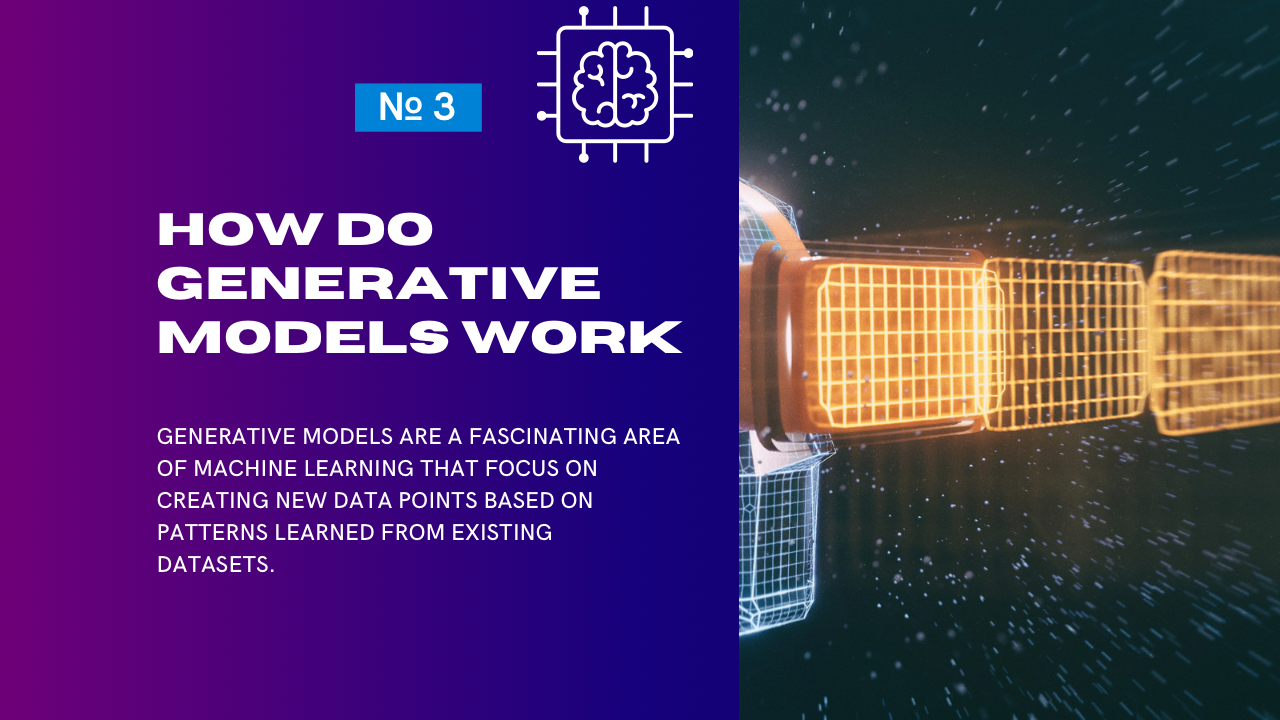Generative models are a fascinating area of machine learning that focus on creating new data points based on patterns learned from existing datasets. Whether it’s generating realistic images, synthesizing audio, or creating coherent text, these models have redefined the boundaries of AI. In this article, we’ll explore the evolution of generative models, focusing on their most influential architectures: GANs, VAEs, and diffusion models.
What Are Generative Models?
At their core, generative models learn the underlying probability distribution of a dataset to generate new samples that are similar to, but not identical to, the original data. They answer the question:
“If this data came from some unknown distribution, how can we model it to create more data like it?”
For example:
- Input: A dataset of human faces.
- Output: Realistic, synthetic faces that look like they could belong to the same dataset.
Key Types of Generative Models
There are several approaches to building generative models, each with unique strengths and applications. Let’s dive into the major types.
1. Generative Adversarial Networks (GANs)
Introduced by Ian Goodfellow in 2014, GANs consist of two neural networks:
- Generator: Creates fake data, trying to mimic the real dataset.
- Discriminator: Attempts to distinguish between real and fake data.
These two networks are trained simultaneously in a game-like setup. The generator improves by learning to “fool” the discriminator, while the discriminator gets better at detecting fakes.
How GANs Work:
- The generator creates a random sample.
- The discriminator evaluates whether the sample is real or fake.
- The generator updates its weights to make the fake sample more realistic.
- This process continues until the generator produces samples indistinguishable from real data.
Advantages of GANs:
- Produces highly realistic outputs (e.g., photorealistic images).
- Fast inference once trained.
Limitations of GANs:
- Training can be unstable due to the adversarial nature.
- Prone to mode collapse, where the generator produces limited diversity in outputs.
Applications:
- Image generation (e.g., StyleGAN).
- Image-to-image translation (e.g., CycleGAN).
- Super-resolution (e.g., enhancing image quality).
2. Variational Autoencoders (VAEs)
VAEs, introduced in 2013 by Kingma and Welling, are a probabilistic approach to generative modeling. Unlike GANs, VAEs aim to explicitly model the underlying data distribution.
How VAEs Work:
- An encoder compresses input data into a latent space (a smaller representation).
- A decoder reconstructs the original data from this latent space.
- The model learns a probability distribution over the latent space, allowing it to sample new points and decode them into new data.
Advantages of VAEs:
- Mathematically grounded with a well-defined latent space.
- Can interpolate between data points (e.g., smoothly transitioning between two faces).
Limitations of VAEs:
- Often produce blurrier outputs compared to GANs.
- Less effective for complex, high-dimensional data like photorealistic images.
Applications:
- Image generation.
- Anomaly detection (e.g., spotting outliers in datasets).
3. Diffusion Models
Diffusion models are the latest innovation in generative AI, gaining prominence with breakthroughs like DALL·E 2 and Stable Diffusion. These models operate by progressively adding noise to the data and then learning to reverse this process to recover the original data.
How Diffusion Models Work:
- Forward process: Gradually adds Gaussian noise to the input data, making it unrecognizable.
- Reverse process: Trains a neural network to denoise the data step by step, eventually reconstructing realistic samples.
Why They Work:
Diffusion models rely on approximating the probability density of the data using a stepwise denoising process, which makes them robust and stable compared to GANs.
Advantages of Diffusion Models:
- High-quality outputs with impressive detail and diversity.
- Stable training process.
Limitations of Diffusion Models:
- Computationally expensive due to the iterative generation process.
- Slower inference compared to GANs.
Applications:
- Image generation (e.g., Stable Diffusion, DALL·E 2).
- Text-to-image synthesis.
- Inpainting (e.g., filling in missing parts of an image).
Comparison of Generative Models
| Model Type | Strengths | Weaknesses | Best For |
|---|---|---|---|
| GANs | High realism, fast inference | Unstable training, mode collapse | Photorealistic images, super-resolution |
| VAEs | Interpretable latent space, stable | Blurry outputs | Anomaly detection, interpolation |
| Diffusion Models | High diversity, robust outputs | Slow inference, computationally expensive | Text-to-image, high-detail generation |
The Future of Generative Models
Generative models are rapidly evolving, with hybrid approaches combining the strengths of different architectures:
- GAN + Diffusion Models: Combining GAN-like efficiency with diffusion’s stability.
- Text-to-Everything Models: Expanding capabilities like OpenAI’s GPT-4 and Stable Diffusion for cross-modal generation.
- Energy-Efficient Models: Research is focusing on making generative models faster and less resource-intensive.
As we continue to refine these architectures, generative models will undoubtedly push the boundaries of AI even further.
Conclusion
From GANs revolutionizing image generation to diffusion models leading the charge in text-to-image synthesis, generative models are reshaping the AI landscape. Understanding their mechanisms and trade-offs helps us appreciate their potential and limitations, guiding their applications in real-world scenarios.
Which generative model will dominate in the future? It may depend on the task, but one thing is clear: generative models are here to stay.
